Drying Shrinkage of Concrete Containing Calcium Stearate, (Ca(C18H35O2)2), with Ordinary Portland Cement (OPC) as a Binder: Experimental and Modelling Studies
Abstract
1. Introduction
2. Materials and Methods
2.1. Preliminary Testing
2.2. Procedure for Specimens Preparation and Testing
2.3. Shrinkage Modelling Approach
3. Results
3.1. Compressive Strength
3.2. Density
3.3. Shrinkage by Experiment
3.4. Shrinkage by Modelling
4. Discussion
5. Conclusions
Author Contributions
Funding
Acknowledgments
Conflicts of Interest
References
- Mishra, R.K.; Tripathi, R.K.; Dubey, V. Early age shrinkage pattern of concrete on replacement of fine aggregate with industrial by-product. J. Radiat. Res. Appl. Sci. 2016, 9, 386–391. [Google Scholar] [CrossRef]
- Piasta, W.; Sikora, H. Effect of entainment on shrikageof blended cements cocnretes. Constr. Build. Mater. 2015, 99, 298–307. [Google Scholar] [CrossRef]
- Castel, A.; Foster, S.J.; Ng, T.; Sanjayan, J.G.; Gilbert, R.I. Creep and drying shrinkage of a blended slag and low calcium fly ash geopolymer concrete. Mater. Sci. 2016, 49, 1619–1628. [Google Scholar] [CrossRef]
- Nath, P.; Sarker, P.K. Effect of mixture proportions on the drying shrinkage and permeation properties of high strength concrete containing class F fly ash. J. Civ. Eng. 2013, 17, 1437–1445. [Google Scholar] [CrossRef]
- Khan, R.A.; Ganesh, A. The effect of coal bottom ash (CBA) on mechanical and durability characteristics of concrete. J. Buil. Mater. Struct. 2016, 3, 31–42. [Google Scholar]
- González-Kuns, R.N.; Pineada, P.; Bras, A.; Morillas, L. Plant biomass ashes in cement-based building materials. Feasibility as eco-efficient structural mortars and grouts. Sustain. Cities Soc. 2017, 31, 151–172. [Google Scholar] [CrossRef]
- Whitmann, F.H.; Xian, Y.Z.; Zhao, T.J.; Beltzung, F.; Giessler, S. Drying and shrinkage of integral water repellent concrete. Restor. Build. Monum. 2006, 12, 229–242. [Google Scholar] [CrossRef]
- Oliveira, M.J.; Ribeiro, A.B.; Branco, F.G. Shrinkage of self-compacting concrete, a comparative analysis. J. Build. Mater. 2016, 9, 117–124. [Google Scholar] [CrossRef]
- Maghfouri, M.; Shafigh, P.; Alimohammadi, V.; Doroudi, Y.; Aslam, M. Appropriate drying shrinkage prediction models for lightweight concrete containing coarse agro-waste aggregate. J. Build. Mater. 2020, 29, 101148. [Google Scholar] [CrossRef]
- Kristiawan, S.A.; Aditya, M.T.M. Effect of high volume fly ash on shrinkage of self-compacting concrete. The 5th International Conference of Euro Asia Civil Engineering Forum (EACEF-5). Procedia Eng. 2015, 125, 705–712. [Google Scholar] [CrossRef]
- Yang, J.; Wang, Q.; Zhou, Y. Influence of curing time on the drying shrinkage of concretes with different binders and water-to-binder ratios. Adv. Mater. Sci. Eng. 2017, 2017, 2695435. [Google Scholar] [CrossRef]
- Maryoto, A.; Shimomura, T. Effect of prestressed force and size of reinforcement on corrosion crack width in concrete member. J. Eng. Sci. Technol. 2017, 12, 2664–2679. [Google Scholar]
- Haryanto, Y.; Gan, B.S.; Maryoto, A. Wire rope flexural bonded strengthening system on rc-beams: A finite element simulation. Int. J. Technol. 2017, 8, 134–144. [Google Scholar] [CrossRef]
- Chari, M.N.; Naseroleslami, R.; Shekarchi, M. The impact of calcium stearate on characteristics of concrete. Asian J. Civ. Eng. 2019, 20, 1007–1020. [Google Scholar] [CrossRef]
- Quraishi, M.A.; Kumar, V.; Abhilash, P.P.; Singh, B.N. Calcium stearate: A green corrosion inhibitor for steel in concrete environment. J. Mater. Environ. Sci. 2011, 2, 365–372. [Google Scholar]
- Lee, Y.L.; Oh, C.H.; Lim, M.H.; Lee, F.W. Engineering properties of foamed concrete containing water repellent. E3S Web Conf. 2018, 65, 02005. [Google Scholar] [CrossRef]
- Cui, Y.; Wang, D.; Zhao, J.; Li, D.; Ng, S.; Rui, Y. Effect of calcium stearate based foam stabilizer on pore characteristics and thermal conductivity of geopolymer foam material. J. Build. Eng. 2018, 20, 21–29. [Google Scholar] [CrossRef]
- Huang, C.; Ma, J.; Zhang, W.; Huang, G.; Yong, Q. Preparation of lignosulfonates from biorefinery lignins by sulfomethylation and their application as a water reducer for concrete. Polymers 2018, 10, 841. [Google Scholar] [CrossRef]
- Maryoto, A.; Gan, B.S.; Hermanto, N.I.S.; Setijadi, R. Corrosion resistance of self-compacting concrete containing calcium stearate. J. Eng. Sci. Technol. 2018, 13, 3263–3276. [Google Scholar]
- Maryoto, A.; Gan, B.S.; Hermanto, N.I.S.; Setijadi, R. The compressive strength and resistivity toward corrosion attacks by chloride ion of concrete containing type I cement and calcium stearate. Int. J. Corros. 2018, 1–9. [Google Scholar] [CrossRef]
- Maryoto, A.; Gan, B.S.; Hermanto, N.I.S.; Setijadi, R. Effect of Calcium Stearate in the Mechanical and Physical Properties of Concrete with PCC and Fly Ash as Binders. Materials 2020, 13, 1394. [Google Scholar] [CrossRef] [PubMed]
- Lin, B.; Zuo, Y. Inhibition of Q235 Carbon Steel by Calcium Lignosulfonate and Sodium Molybdate in Carbonated Concrete Pore Solution. Molecules 2019, 24, 518. [Google Scholar] [CrossRef] [PubMed]
- Sakata, K.; Tsubaki, T.; Inoue, S.; Ayano, T. Prediction equations of creep and drying shrinkage for wide-ranged strength concrete., In Creep, Shrinkage and Durability of Concrete and other quasi-brittle Materials. Proceedings of the Sixth International Conference. JSCE 2001, 690, 1–19. [Google Scholar] [CrossRef]
- JSCE3600. JSCE Guideline for Concrete No. 15. In Standard Specifications for Concrete Structures–Design, 2007; Concrete Committee of Japan Society of Civil Engineers: Tokyo, Japan, 2010. [Google Scholar]
- Bazant, Z.P.; Baweja, S. Creep and shrinkage prediction model for analysis and design of concrete structures: Model B3. Mater. Struct. 1996, 28, 357–365. [Google Scholar] [CrossRef]
- ASTM C157/C157M, Concrete and Aggregates. Am. Soc. Test. Mater. 2003. Available online: https://www.scribd.com/document/423488433/ASTM-C157 (accessed on 22 October 2020).
- Indonesia Reinforced Concrete Code. PBI 1971 NI-2; Public Work and Electrical Power Department: Bandung, Indonesia, 1971; Available online: https://kupdf.net/download/pbi-1971-pdf_58edb433dc0d60536bda9812_pdf (accessed on 22 October 2020).
- Indonesia National Stanadard. SNI Portland Cement 2049:2015 for OPC; National Standardization Board: Jakarta, Indonesia, 2015; Available online: https://www.scribd.com/doc/281555931/16103-SNI-2049-2015 (accessed on 22 October 2020).
- ACI Committe 212, Report on Chemical Admixture for Concrete ACI 212.3R-10, 46-50. Available online: https://www.penetron.com/uploads/pdf/Penetro-ACI212-3R-10-Chapter15-PRA.pdf (accessed on 16 October 2020).
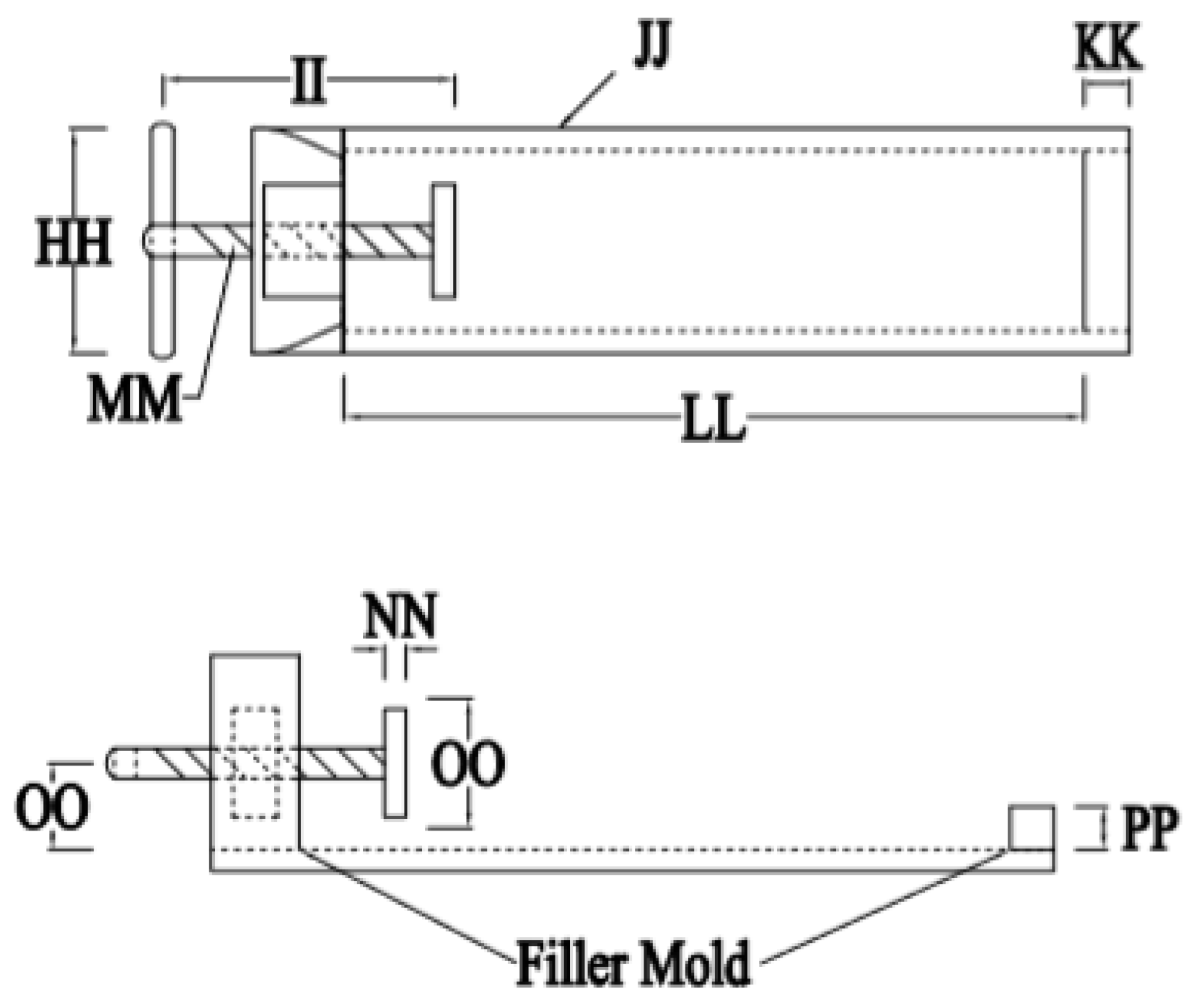

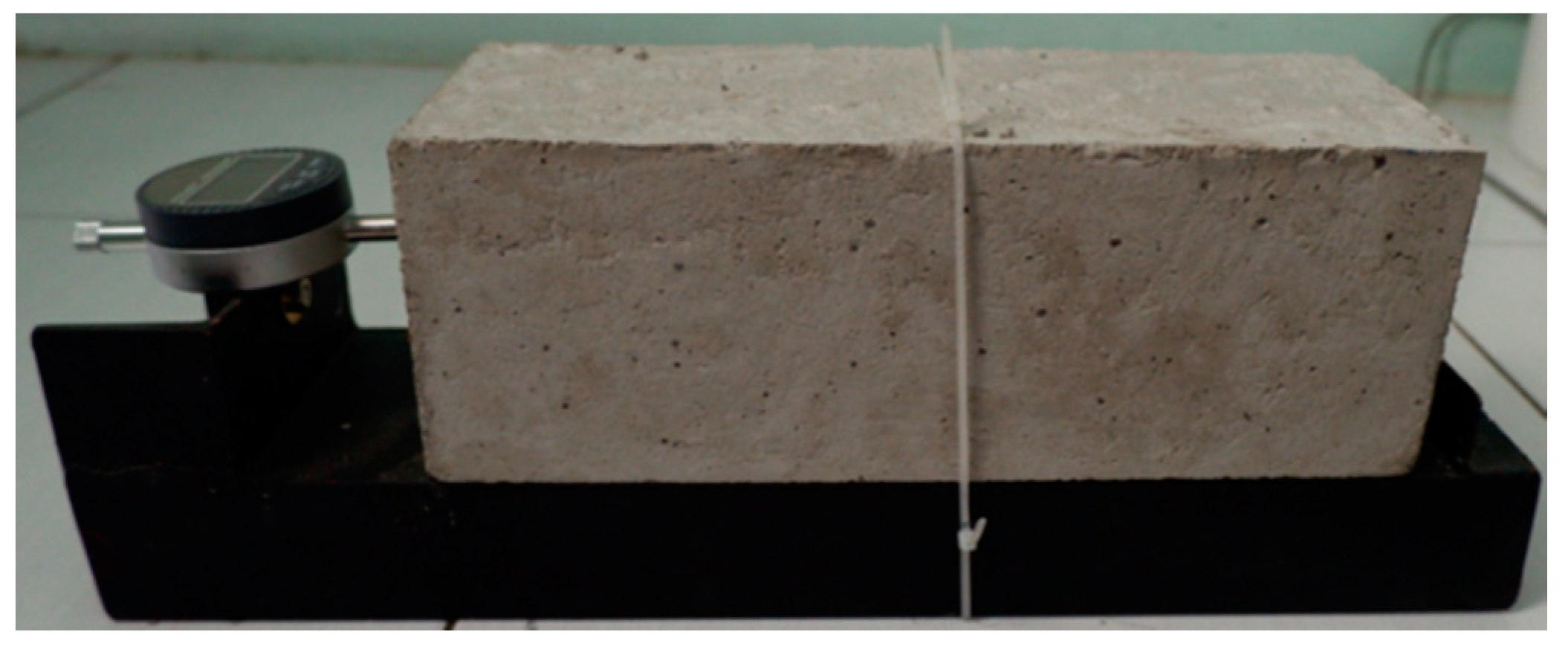

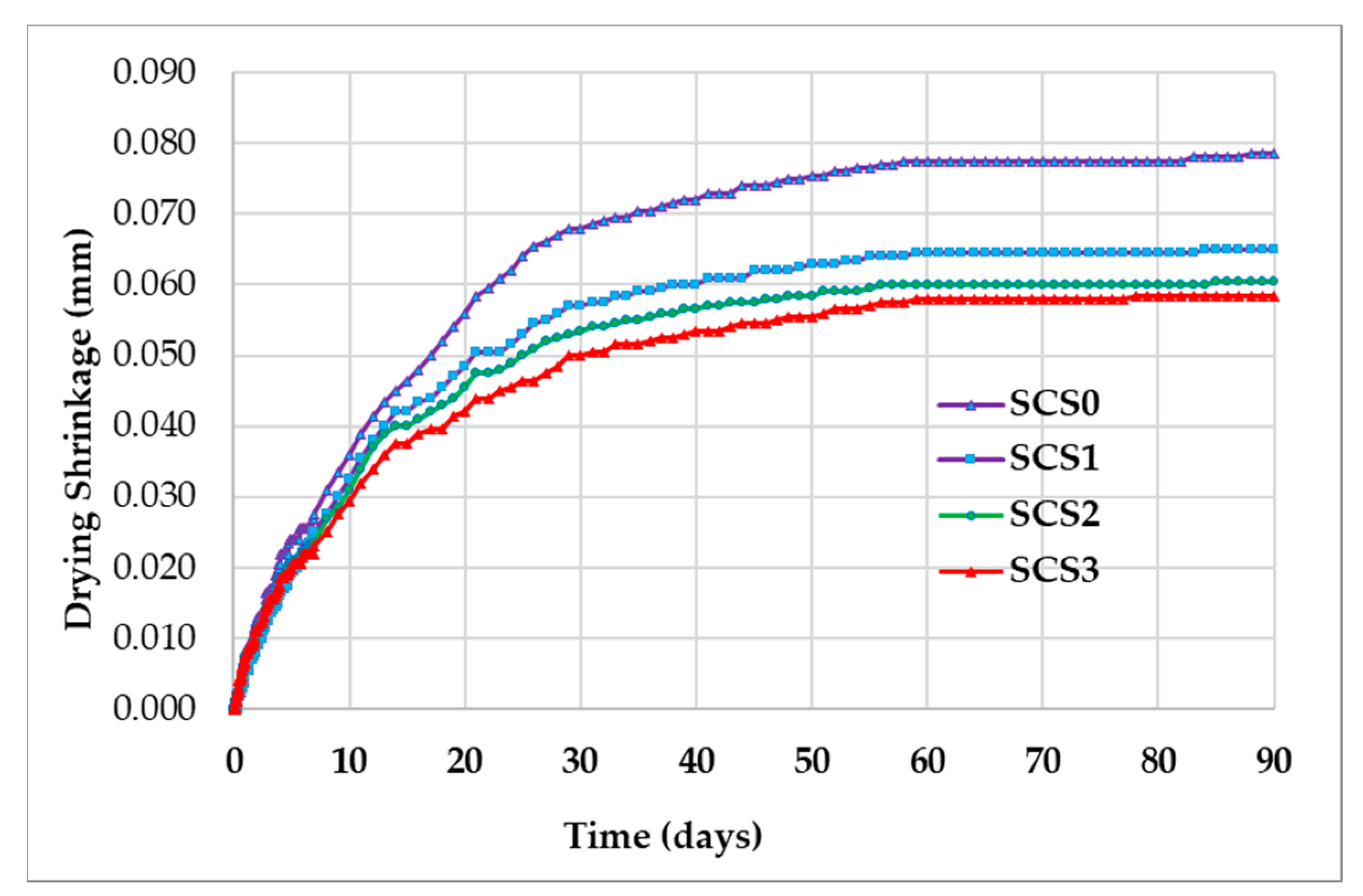
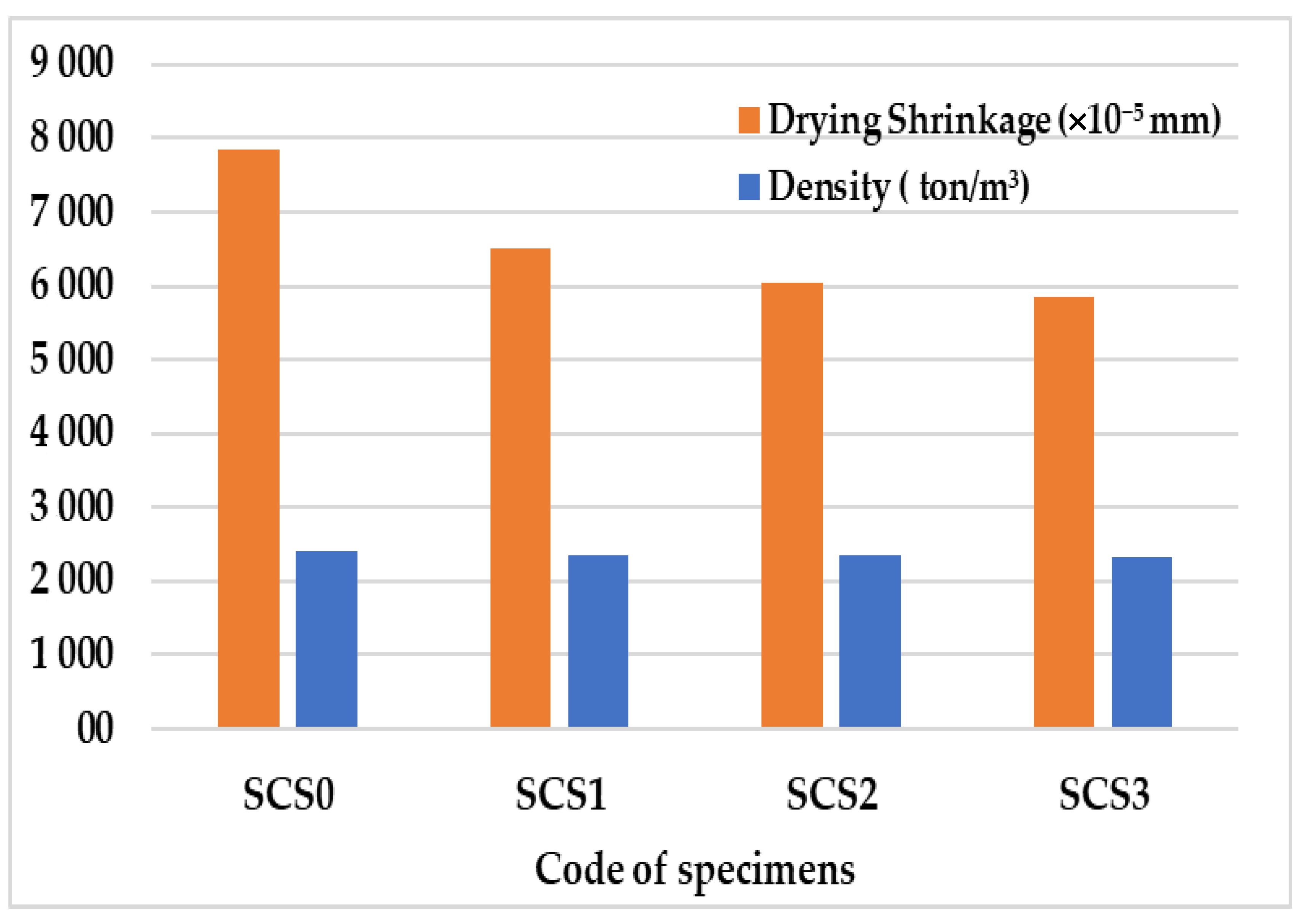
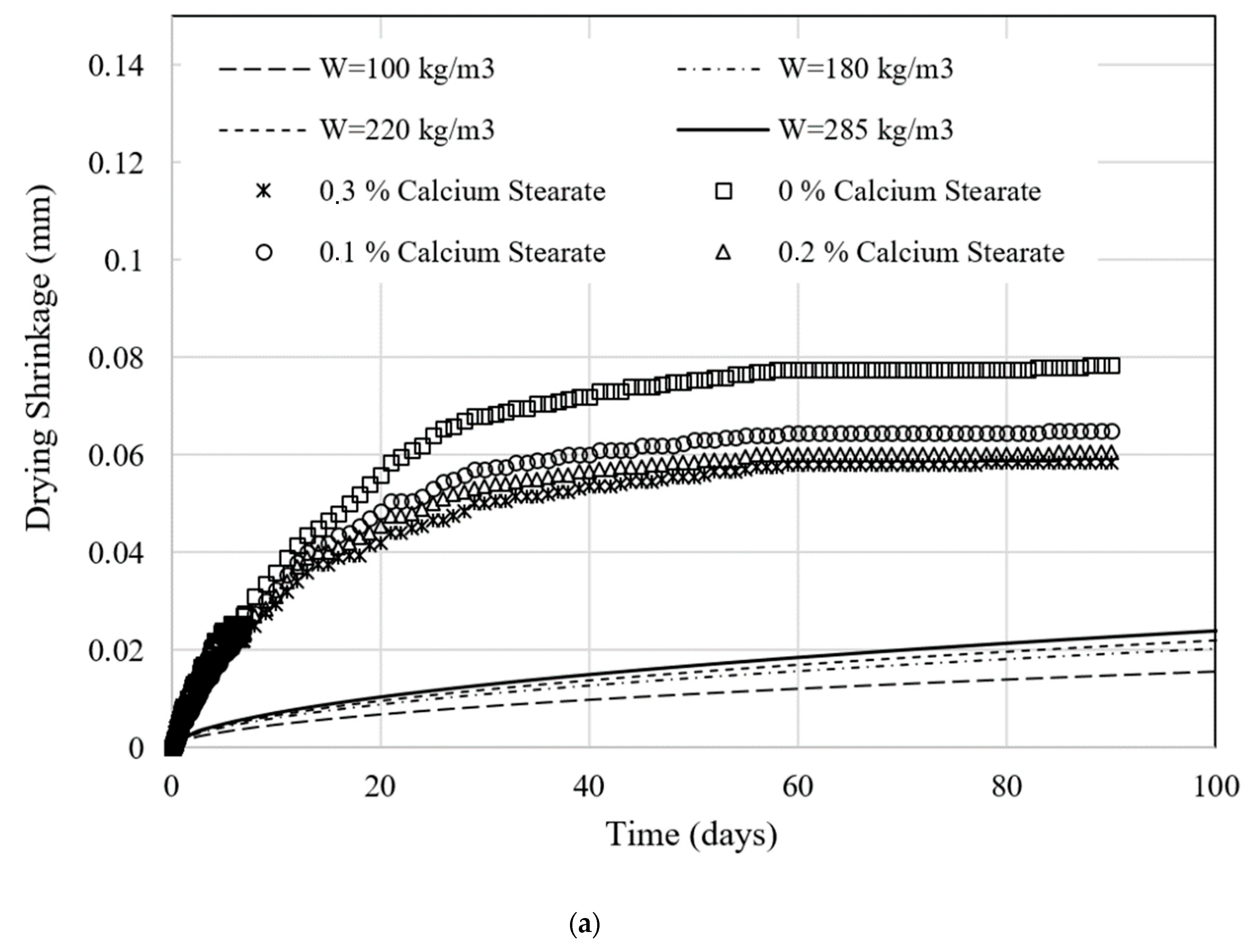
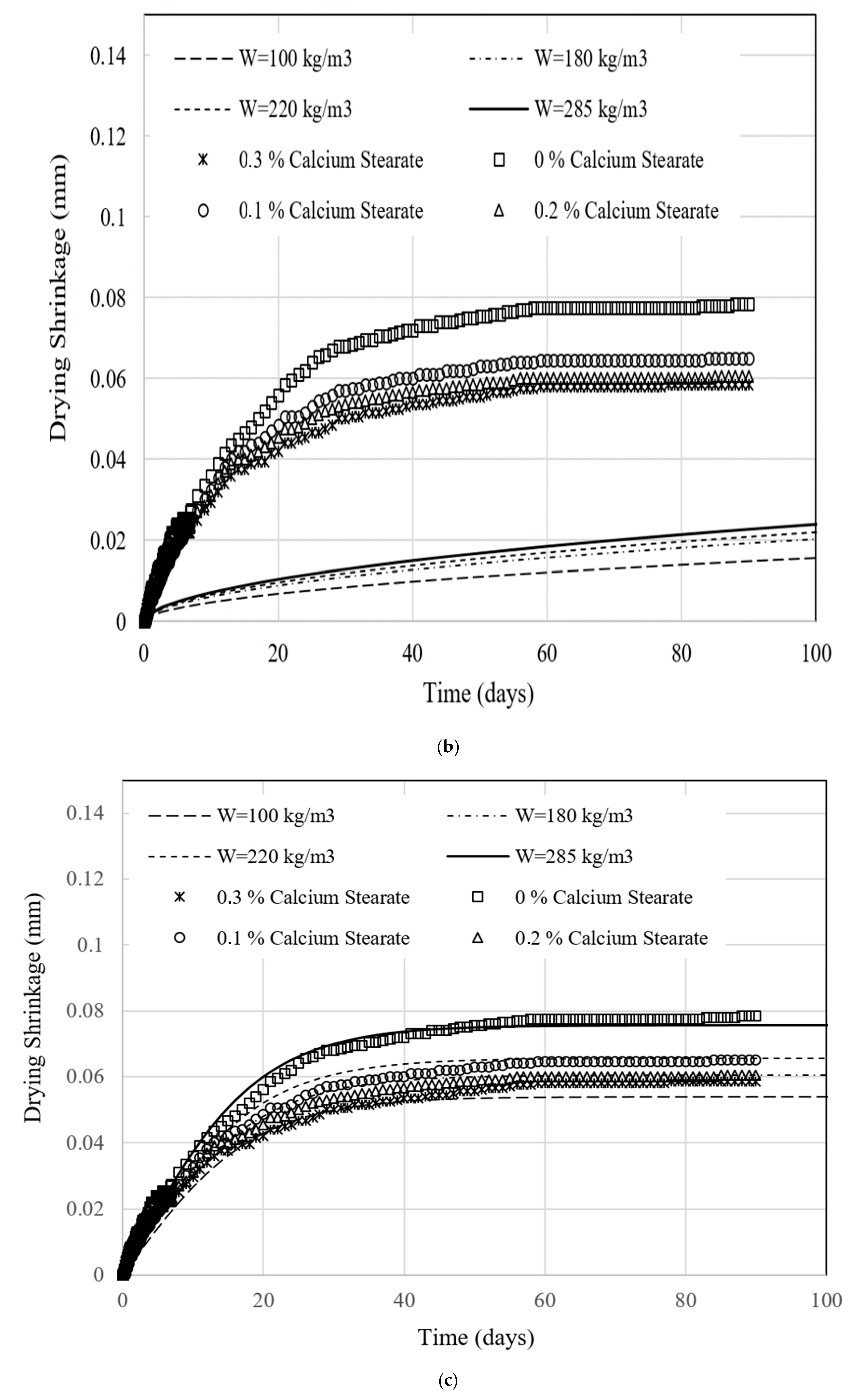
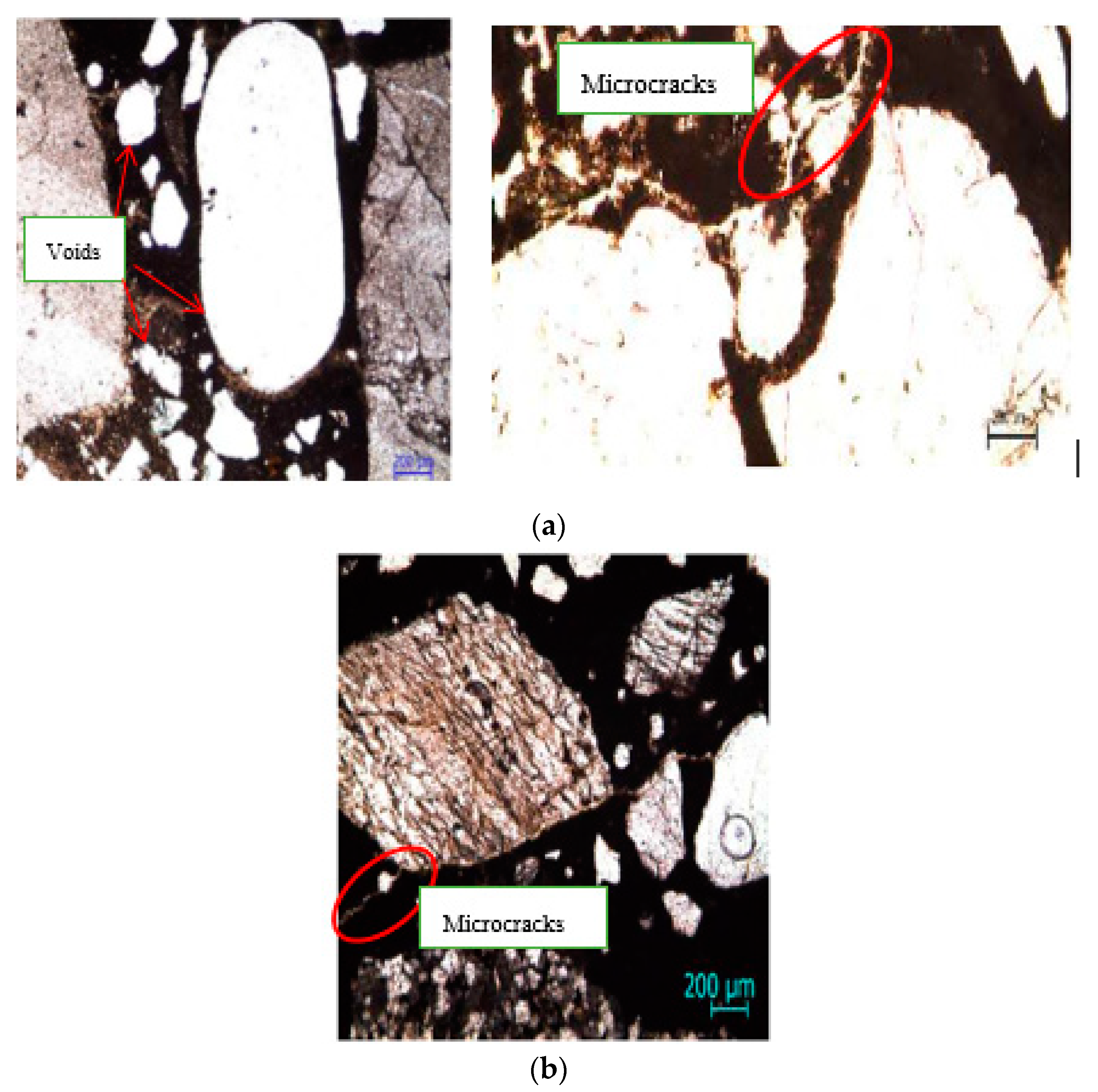
| Physical Properties | Crushed Stone | Sand |
|---|---|---|
| Specific gravity | 2.55 (PBI 1971 [27] = no requirement) | 2.65 (PBI 1971 = no requirement) |
| Density (ton/m3) | 1.53 (PBI 1971 = no requirement) | 1.65 (PBI 1971 = no requirement) |
| Fineness modulus | 6.86 (PBI 1971 = no requrement) | 2.67 (PBI 1971 = no requrement) |
| Clay content (%) | 0.94 (PBI 1971 = max. 1%) | 2 (PBI 1971 = max. 5%) |
| Abrasion with 500 rotation (%) | 11 (PBI 1971 = max. 22%) | Not required (PBI 1971 = no requirement) |
| Physical Characteristic | Result | SNI Portland Cement 2049:2015 (OPC) |
|---|---|---|
| Fineness with Blaine apparatus (m2/kg) | 360 | Min. 280 |
| Fineness with mesh 45 µ, residue (%) | 10.34 | - |
| Initial setting time (minutes) | 137 | Min. 45 |
| Final setting time (minutes) | 248 | Max. 375 |
| Expansion | 0.04 | Max. 0.80 |
| Compressive strength (kg/cm2) | ||
| −3 days | 228 | Min. 135 |
| −7 days | 284 | Min. 215 |
| −28 days | 390 | Min. 300 |
| False set | 88.78 | Min. 50 |
| Chemical Content | OPC (%) | SNI Portland Cement 2049:2015 for OPC |
|---|---|---|
| Silicon oxide (SiO2) | 18.76 | - |
| Alumunium oxide (Al2O3) | 5.54 | - |
| Ferric oxide (Fe2O3) | 3.31 | - |
| Calcium oxide (CaO) | 63.16 | - |
| Magnesium oxide (MgO) | 1.73 | Max. 6.00 |
| Sulphur trioxide (SO3) | 2.06 | Max. 3.50 |
| Loss of ignition | 3.73 | Max. 5.00 |
| Free lime | 1.53 | - |
| Insoluble part | 0.71 | Max. 3.00 |
| Alkali (Na2O + 0.658 K2O) | 0.44 | Max. 0.60 |
| Materials | Weight (kg) | Volume (m3) |
|---|---|---|
| Cement (OPC) | 324 | 0.114 |
| Crushed stone | 940 | 0.376 |
| Sand | 805 | 0.292 |
| Water | 205 | 0.205 |
| Calcium stearate (%) | 0; 0.1; 0.2; 0,3 | ≈0.00 |
| Water cement ratio | 0.63 | - |
| Sand/aggregate | 0.46 | - |
| Void | - | 0.015 |
| Total | 1.002 | |
| Code | Number of Specimen | Length (mm) | Width (mm) | Thickness (mm) | Volume (mm3) | Weight (g) | Density (g/cm3) |
|---|---|---|---|---|---|---|---|
| SCS0 | 1 | 100.05 | 100.07 | 285.08 | 2,854,222 | 6898 | 2.42 |
| 2 | 99.05 | 98.01 | 283.15 | 2,748,789 | 6589 | 2.40 | |
| SCS1 | 1 | 100.14 | 100.22 | 285.33 | 2,863,580 | 6801 | 2.37 |
| 2 | 100.03 | 100.01 | 285.17 | 2,852,840 | 6709 | 2.35 | |
| SCS2 | 1 | 100.04 | 100.03 | 285.12 | 2,853,196 | 6701 | 2.35 |
| 2 | 100.87 | 100.75 | 285.93 | 2,905,807 | 6808 | 2.34 | |
| SCS3 | 1 | 100.95 | 100.88 | 285.97 | 2,912,271 | 6800 | 2.33 |
| 2 | 100.42 | 100.51 | 285.71 | 2,883,732 | 6702 | 2.32 |
| Material Constant | Description | Values in Figure 6 | ||
|---|---|---|---|---|
| [24] | [25] | [26] | ||
| Water content [kg/m3] | varied | varied | varied | |
| Volume-surface ratio [mm] | 275 | 7.0 | - | |
| Relative humidity [no unit] | - | 50 | - | |
| Humidity-dependent factor [mm] | - | - | 1.0 | |
| Concrete compressive strength at 28 days [MPa] | 21 | - | 21 | |
| Relative humidity [no unit] | 0.45 | - | - | |
| Cement type factor [no unit] | 18.0 | - | - | |
| Cement type factor [no unit] | - | - | 1.7 | |
| Curing factor [no unit] | - | - | 1.0 | |
| Size and shape-dependent factor [days] | - | - | 18.5 | |
| Initial time [days] | 0 | 0 | 0 | |
| Shrinkage time [days] | from test | from test | from test | |
Sample Availability: Samples of the compounds Ca(C18H35O2)2 are available from the authors. |
Publisher’s Note: MDPI stays neutral with regard to jurisdictional claims in published maps and institutional affiliations. |
© 2020 by the authors. Licensee MDPI, Basel, Switzerland. This article is an open access article distributed under the terms and conditions of the Creative Commons Attribution (CC BY) license (http://creativecommons.org/licenses/by/4.0/).
Share and Cite
Maryoto, A.; Setijadi, R.; Widyaningrum, A.; Waluyo, S. Drying Shrinkage of Concrete Containing Calcium Stearate, (Ca(C18H35O2)2), with Ordinary Portland Cement (OPC) as a Binder: Experimental and Modelling Studies. Molecules 2020, 25, 4880. https://doi.org/10.3390/molecules25214880
Maryoto A, Setijadi R, Widyaningrum A, Waluyo S. Drying Shrinkage of Concrete Containing Calcium Stearate, (Ca(C18H35O2)2), with Ordinary Portland Cement (OPC) as a Binder: Experimental and Modelling Studies. Molecules. 2020; 25(21):4880. https://doi.org/10.3390/molecules25214880
Chicago/Turabian StyleMaryoto, Agus, Rachmad Setijadi, Arnie Widyaningrum, and Sugeng Waluyo. 2020. "Drying Shrinkage of Concrete Containing Calcium Stearate, (Ca(C18H35O2)2), with Ordinary Portland Cement (OPC) as a Binder: Experimental and Modelling Studies" Molecules 25, no. 21: 4880. https://doi.org/10.3390/molecules25214880
APA StyleMaryoto, A., Setijadi, R., Widyaningrum, A., & Waluyo, S. (2020). Drying Shrinkage of Concrete Containing Calcium Stearate, (Ca(C18H35O2)2), with Ordinary Portland Cement (OPC) as a Binder: Experimental and Modelling Studies. Molecules, 25(21), 4880. https://doi.org/10.3390/molecules25214880





